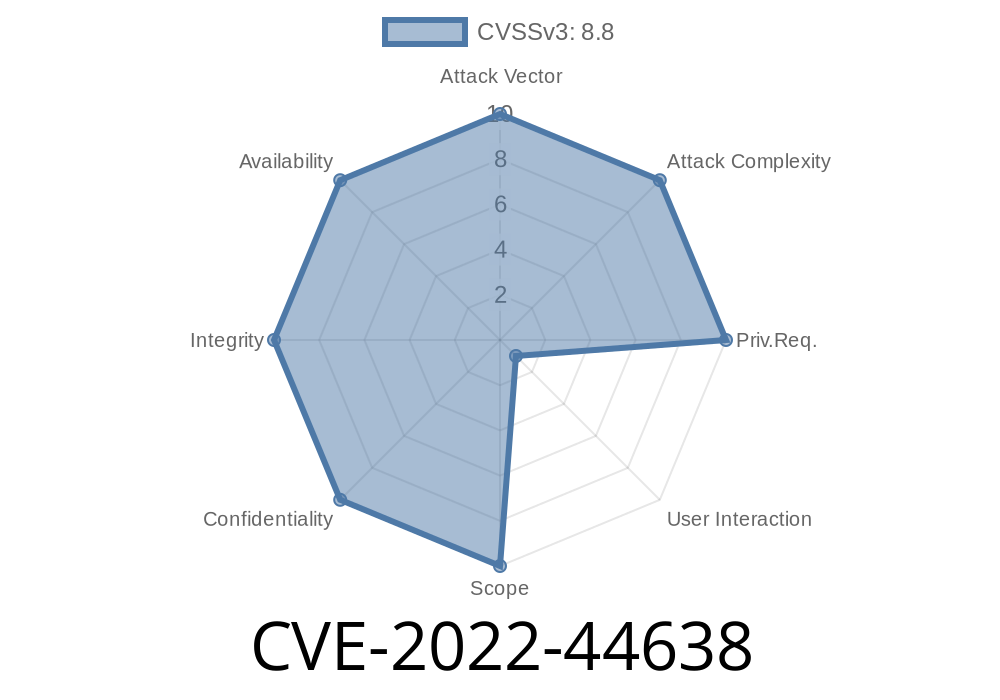A newly discovered vulnerability (CVE-2022-44638) impact libpixman, specifically versions before .42.2. Libpixman is a low-level graphics library that provides basic support for image manipulation, such as compositing and trapezoid rasterization. It is crucial for various graphical applications and environments, including the X Window System and Cairo graphic library.
This vulnerability consists of an out-of-bounds write, also known as a heap-based buffer overflow. It takes place in the rasterize_edges_8() function due to an integer overflow in the pixman_sample_floor_y function. In this post, we will disassemble the vulnerable function and show a code snippet of the problematic section, discuss the possible exploit scenarios and link to the original sources, and references.
The Vulnerability (CVE-2022-44638)
The vulnerability exists in the rasterize_edges_8 function, which is part of libpixman. The affected function has an out-of-bounds write, leading to a heap-based buffer overflow. This is caused by an integer overflow error in the pixman_sample_floor_y function.
A simplified version of the vulnerable code snippet in question
static void
rasterize_edges_8 (pixman_image_t * image,
pixman_edge_t * l,
pixman_edge_t * r,
pixman_fixed_t t,
pixman_fixed_t b,
pixman_bool_t antialias)
{
/* omitted for simplicity */
for (pixman_fixed_t y = pixman_sample_floor_y (t, antialias);
y < pixman_sample_floor_y (b, antialias);
y += STEP_Y)
{
int lx = calculate_x (&l_edge, y);
int rx = calculate_x (&r_edge, y);
int32_t width = rx - lx;
/* vulnerable part */
uint8_t values[width]; // This can overflow the integer width
/* ... */
}
}
The vulnerability occurs when the width calculated at the above code snippet becomes too large for the integer width to handle. This results in an integer overflow error, which causes the allocation of a smaller buffer (uint8_t values[width]) than necessary. Subsequent write operations on this buffer will lead to out-of-bounds access, causing a heap-based buffer overflow.
Exploit Details and Impact
An attacker who successfully exploits this vulnerability can cause a crash, execute arbitrary code, or perform other unintended behavior within the context of the target application. Heap-based buffer overflows are typically exploited by attackers to manipulate data structures, execute malicious code, or cause a denial-of-service (DoS) by corrupting memory management.
To exploit this flaw, an attacker needs to find a way to trigger the vulnerable code path in the target application. This typically involves supplying specially crafted input data that, when processed, results in the integer overflow and subsequent out-of-bounds write operation. Due to the widespread use of libpixman in various graphical applications and environments, there might be several possible attack vectors, depending on the specific usage scenarios and configurations.
Original References and Mitigation
The vulnerability was discovered by researchers, and the details were published in the following sources:
1. CVE-2022-44638 entry in the National Vulnerability Database (NVD)
2. Pixman official repository, issue report
3. Patch fixing the vulnerability in the Pixman repository
It is strongly recommended that affected users upgrade to the latest stable version (.42.2 or later) of libpixman. This version contains a fix that prevents the integer overflow and heap-based buffer overflow, ensuring that the vulnerability cannot be exploited. For users who cannot immediately upgrade, it is crucial to monitor vulnerable applications and environments closely for signs of exploitation and apply the necessary security measures accordingly.
Timeline
Published on: 11/03/2022 06:15:00 UTC
Last modified on: 12/13/2022 20:25:00 UTC
